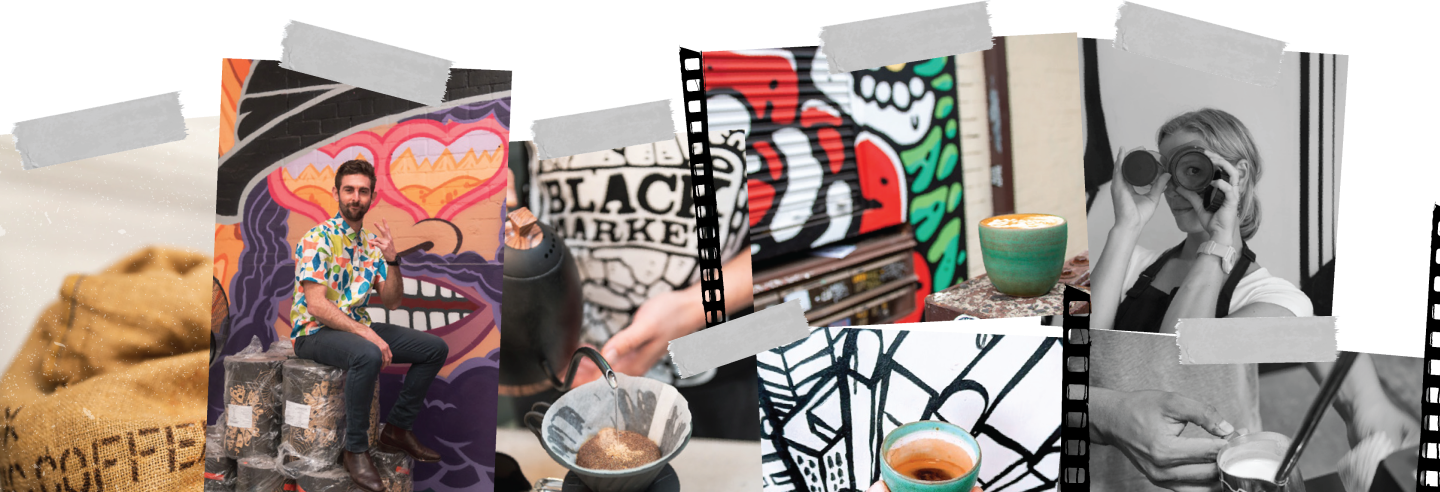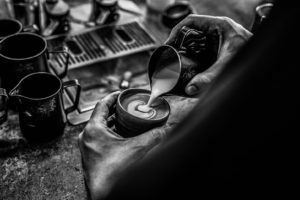
Four key elements to improving your Latte Art
Practice, practice, repeat. It’s true that, to truly master your latte art skills, you have to keep practicing over and over again, take a class…then continue to practice.
There are four key elements you want to remember when practicing your coffee art:
1. Height
Where you hold your milk pitcher is important for the different stages of the coffee pour. You want to think about how the milk is going to enter and mix with the coffee.
To start, you want to build the drink. This will require mixing milk into the espresso, keeping your steamed milk smooth – you don’t want the foam yet!
Think of it like jumping into a pool of still water (the espresso is your still water). A diver will begin from a high level to create as little ripple effect as possible. This is what you are aiming for with your initial pour. We recommend starting from about 5cm above the cup to begin. The higher up you pour, the thinner the stream of milk will be that is going into the cup, and the smaller the disturbance will be, thereby creating less volume.
Now you’ve created your base, it’s time to create more volume so you can create your pattern. Move the pitcher as close the cup as possible. As you get closer to the cup, you will notice more white foamed milk sitting atop the coffee, rather than mixing in with the espresso. You need this to create distinct patterns.
2. Positioning
Think about drawing your patterns for coffee the same you would if you were drawing on a piece of paper or canvas. Where your brush hits the canvas is where your pattern will be positioned.
It’s a different playing field when it comes to coffee, because you’re not drawing on a still canvas. The milk will move with the coffee as you pour, so it’s important you have a steady hand. If you begin your pattern on the side, it will push the foam to that side. Keep drawing your patterns from the centre out.
Remember to adjust your pour as you adjust the cup. Begin with your cup tilted, then steadily even it out as you finish your pattern. Ensure that, as you move your cup, you are also moving the milk pitcher so your stream of milk continues to hit the coffee in the centre.
3. Speed
It’s important to also control the speed at which the milk is pouring out of the pitcher and into the cup. When you begin your pour higher away from the cup, you want to be pouring pretty slow. After you have moved your milk pitcher close to the surface of the cup, you can increase the flow of the pour. The close proximity and increased volume will bring your foam out from the bottom of the milk pitcher to be used on top of the coffee.
4. Precision
Throughout drawing your patterns you must keep a steady hand. Control is important for executing those distinct lines and creating consistent staple patterns on your coffees. You’ve got limited time and space with your cup to create a good pattern, so keep focused.
Practice, practice, practice. We promise you’ll improve!
Interested in a latte art class? Head here to check it out.
Be The first to know about new digs.





